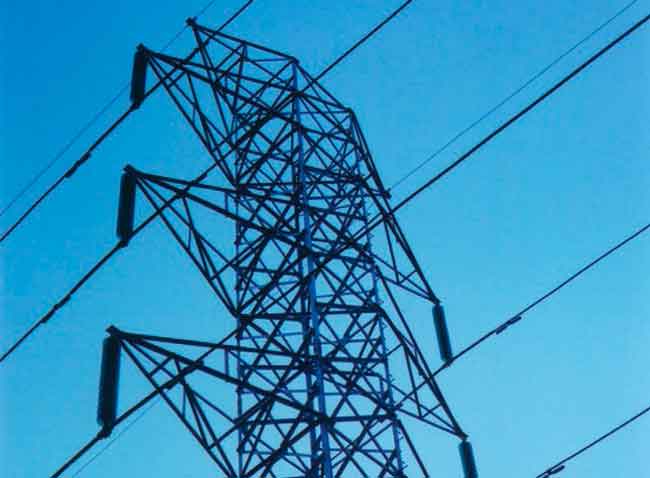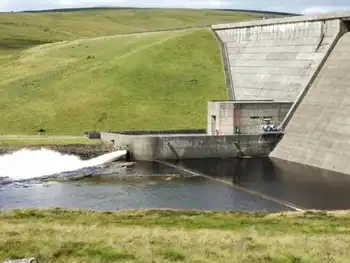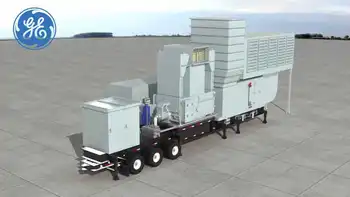Giving wind its due in New Mexico
By Santa Fe New Mexican
Substation Relay Protection Training
Our customized live online or in‑person group training can be delivered to your staff at your location.

- Live Online
- 12 hours Instructor-led
- Group Training Available
As far as Gary Anderson knows, his wind turbine is the first one permitted and installed at a private residence in Santa Fe County. The county and the Army National Guard each have wind turbines that don't go through the same permitting process.
Anderson, owner of WindSunNM, which sells and installs solar and wind energy systems, said he's convinced wind is even better than the sun for creating electricity. "The wind blows 24 hours. The sun only shines a few hours a day," Anderson said. "I think this is a viable alternative for this area."
Now he'll have a working wind turbine to show his prospective customers.
The state Construction Industries Division and the county both had to approve the system, and it took seven months, Anderson said. He hopes he's paved the way for other people interested in installing wind energy generators.
Public Service Company of New Mexico on July 6 approved the turbine, which is tied to the power grid, at Anderson's home a couple of miles west of N.M. 599. It is the fifth one in the PNM statewide service area; four are on private land.
Anderson was the first resident to take his wind turbine generator through the Santa Fe County permitting process, according to county design reviewer Vicente Archuleta. Since it was the first, the county had to figure out what ordinances would apply. "We took it in as kind of the same use as a windmill," Archuleta said with a laugh. "Wind generators, I think, are going to replace windmills."
Since the wind turbine is on a tower taller than 24 feet, it could not be approved administratively under county ordinance. Instead, Anderson had to mail notices of his plan to neighbors, take it to a public hearing and get County Development Review Committee approval. Anderson said about 30 people from his neighborhood showed up at the hearing. "People were very receptive," he said, noting no opposition to the wind turbine.
Anderson also had to get a letter from the state Department of Game and Fish stating the turbine was not in a migratory bird flyway. "This is all brand new to us. We've been having to trial-and-error all the submittal requirements," Archuleta said. "I think we have it down better now. We have a checklist."
Still, "I'm telling people it takes anywhere from three to six months to get a permit," Archuleta said. He's received two applications already for wind turbines in Edgewood and said several people have called recently asking about how to get them permitted.
The market for small wind turbines grew 78 percent last year, according to the American Wind Energy Association. Sales are expected to increase in the next five years.
Anderson's wind turbine, a SkyStream 3.7, produces 1.8 kilowatts per hour of power when the wind is blowing 27 miles per hour. "It's thoroughly underrated. It produces more," he said.
If the wind gusts above 60 miles per hour, the wind turbine automatically shuts down. When it is spinning at a good clip, it sounds like a small helicopter warming up. "To me, it's music," Anderson said with a grin.
The SkyStream is produced in Flagstaff, Ariz., by Southwest Windpower. The company has been designing and manufacturing small wind turbines for more than a dozen years. The SkyStream has 6-foot-long blades of molded fiberglass that curve gracefully at the ends. The nose cone is made of UV-resistant plastic, and the turbine shell is made of die-cast aluminum. The turbine sits atop a steel pole. It is attached by eight, 2 1/2-foot-long bolts to a concrete foundation underground.
When the wind spins the turbine blades, AC electricity flows through underground lines to Anderson's house and is hooked into the power box there. Anderson liked the SkyStream design because he did not need an inverter to convert DC power to AC.
Anderson can flip a switch and shut the turbine down instantly, a plus for PNM workmen if they need to work on a nearby line. If PNM has an outage, the wind turbine also automatically shuts down.
Anderson invited people to watch the pole and turbine go up at the end of June. More than 30 curious people stopped by. "The most frequent comment we got was, 'It's about time,' " he said.
Anderson figures he and his wife, Ruth, use 400 to 700 kilowatt-hours of electricity a month in their 2,400-square-foot home. From December through May, he believes the wind turbine will produce an average of 400 kilowatt-hours. In the summer and fall, it will produce less.
Anderson claims the cost of installing a small wind turbine like his is a little more expensive than a similar size photovoltaic system but requires less upkeep. Maintenance on the wind turbine: Change the blades every 20 years.
Installing a 2.0-kilowatt photovoltaic system runs about $17,000, he said. The same size wind turbine generator would cost about $19,000, including the permitting, but could be more expensive depending on where it is installed.
Wind energy generators can get a 30 percent tax credit under the American Recovery and Re-investment Act of 2009, which removed a cap on costs.
PNM customers who have a wind turbine or solar photovoltaics on their property receive a credit on their monthly utility bill for every kilowatt they produce over what they use.
But wind doesn't qualify for some of the incentives that solar receives in New Mexico. For example, PNM pays 13 cents per kilowatt-hour to customers producing some of their own power from solar photovoltaics. Wind energy doesn't qualify.
"When I found that out, I went ballistic," Anderson said. "Wind only gets the federal tax credit. Solar gets federal and state tax credits and pays no gross receipts taxes. I'm going to work hard to change that and make it more equitable. Alternative energy is alternative energy."











